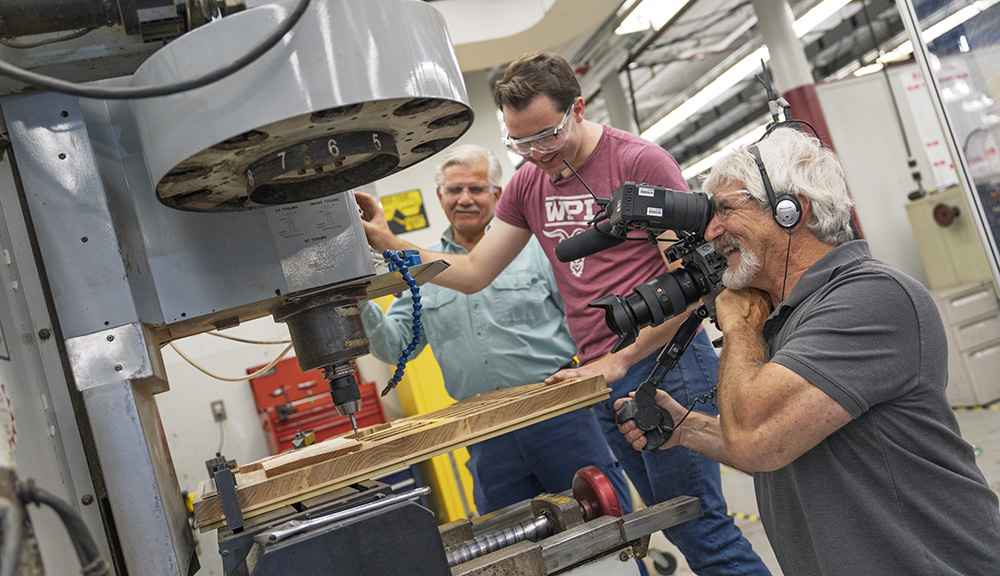Matt DeDonato, WPI’s team leader for the Atlas team, will be the primary WPI robotics voice in the film, discussing humanoid robots and ongoing efforts to have them walk, climb, and run. He will also discuss why this is such a challenge in robotics science.
Atlas is a humanoid robot developed for DARPA by Boston Dynamics, to compete in DARPA’s Robotics Challenge. That program was created by DARPA to accelerate the development of advanced robots that can help respond to disasters like the Fukushima reactor accident in Japan. Such robots would do dangerous jobs and operate in places where people cannot safely work. They would need to work in environments and use tools made for people, drive vehicles that have not been modified, and negotiate rubble and other hazards associated with degraded environments.
WPI’s robot, nicknamed WARNER (WPI’s Atlas Robot for Non-conventional Emergency Response), will compete in the DARPA Robotics Challenge Finals in California in June 2015.
Aguilera-Hellweg, who began his still photography career as an assistant to Annie Liebowitz at Rolling Stone, has worked forNational Geographic, LIFE magazine, and The New York Times Magazine, among others. He did his internal medical residency at UMass Medical School and has had a lifelong interest in the human body. He is the author of a book on surgical photos, The Sacred Heart: An Atlas of the Body Seen Through Invasive Surgery.
“I’ve worked for national magazines, and years ago I began photographing androids and humanoids for National Geographic,” Aguilera-Hellweg said. “And found that I was asking myself the same questions I asked myself when I was photographing human anatomy — Where do I reside? Am I in my heart, in my brain? You know, when I looked inside the human body, where is it that is me?
 “And when I found myself photographing these advanced, brilliant androids and humanoids that you find in the research labs around the world that I was privy to, I found myself asking that very same question. I get to photograph Atlas, which is pretty much the supreme humanoid in terms of bipedal motion at this size. It’s an opportunity to ask questions about human motion and such.
“And when I found myself photographing these advanced, brilliant androids and humanoids that you find in the research labs around the world that I was privy to, I found myself asking that very same question. I get to photograph Atlas, which is pretty much the supreme humanoid in terms of bipedal motion at this size. It’s an opportunity to ask questions about human motion and such.
“This documentary film is somewhat unique in that it’s a science documentary about these robots, but they’re using me as the protagonist interviewer who has a science background, but who can cross lines between asking these very basic science questions because I’m based in the scientific method. But also I am an artist, and have bigger questions to answer that scientists don’t normally address.”
 “And when I found myself photographing these advanced, brilliant androids and humanoids that you find in the research labs around the world that I was privy to, I found myself asking that very same question. I get to photograph Atlas, which is pretty much the supreme humanoid in terms of bipedal motion at this size. It’s an opportunity to ask questions about human motion and such.
“And when I found myself photographing these advanced, brilliant androids and humanoids that you find in the research labs around the world that I was privy to, I found myself asking that very same question. I get to photograph Atlas, which is pretty much the supreme humanoid in terms of bipedal motion at this size. It’s an opportunity to ask questions about human motion and such.

